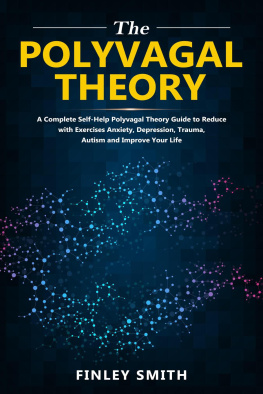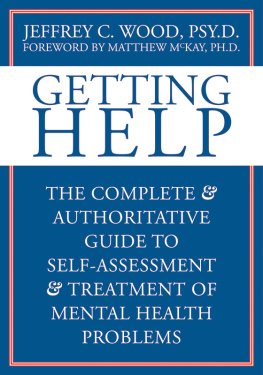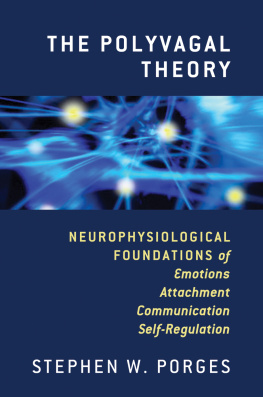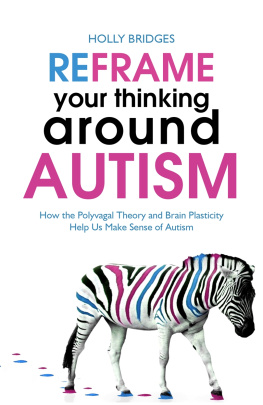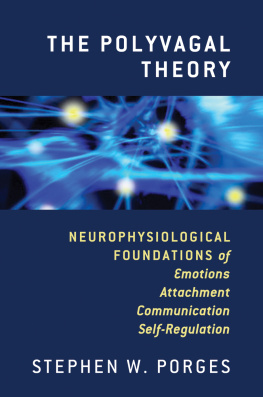
Polyvagal
Theory and the
Developing
Child
SYSTEMS OF CARE FOR
STRENGTHENING KIDS,
FAMILIES, AND COMMUNITIES
MARILYN R. SANDERS AND
GEORGE S. THOMPSON
FOREWORD BY STEPHEN W. PORGES

W.W. NORTON & COMPANY
Independent Publishers Since 1923
A NORTON PROFESSIONAL BOOK
MARILYN SANDERS
To my husband, Peter Adomeit, who has supported me
with love every step of the way...
And to our children, Matthew, Ian, and River,
the best teachers a parent could have.
GEORGE THOMPSON
To Dr. AnnMarie Glodich, my constant partner
in learning to love deeply and well,
And to our children, Seth and Tara Jampa, whose joy
and appreciation warm the hearts of all they touch.
ADVANCE PRAISE
In Polyvagal Theory and the Developing Child, Marilyn Sanders and George Thompson apply the principles of Polyvagal Theory to explore the disruptions to connection the children and families they serve experience on the journey from conception through adolescence and the impact of those traumatic moments. Drawing on wisdom from years of practice, they present a framework grounded in neurobiology and brought alive in clinical stories that weaves the essential ingredients of safety and connection into clinical interactions. With this beautifully written exploration of the science of safety, Drs. Sanders and Thompson offer a guide to engaging the vagal pathways embedded in our biology and creating the social connections that are the foundation of well-being.
Deb Dana, LCSW, author of The Polyvagal Theory in Therapy: Engaging the Rhythm of Regulation and Polyvagal Exercises for Safety and Connection: 50 Client-Centered Practices
Marilyn Sanders and George Thompson skillfully employ Polyvagal Theory to elucidate the biological underpinnings of emotion regulation in attachment relationships, showing how vagal tone supports social connections essential for a feeling of safety needed to cope with childhood adversity. The authors buttress their conceptual framework with scholarly research and clinical examples. Most importantly, they infuse their writing and practice with the key ingredient for healing that transcends the remarkable vagus nerves contribution: a compassionate spirit.
Jon G. Allen, Ph.D., Clinical Professor, Menninger Department of Psychiatry and Behavioral Sciences, Baylor College of Medicine, Voluntary Faculty; author of Trusting in Psychotherapy, American Psychiatric Association Publishing
In their brilliant text, Sanders and Thompson deliver an inspiring call to action. After carefully explaining how the polyvagal system works, they make a convincing argument for educating others (especially those caring for infants, children, and families) with the goal of establishing a trauma and polyvagal-informed society. This book could and should be required reading for teachers, physicians, psychotherapists, and any other professional caregivers interested in the development of resilience as an optimal outcome.
Deborah L. Korn, Psy.D., Faculty, Trauma Research Foundation and EMDR Institute, coauthor, Every Memory Deserves Respect
ABOUT THE AUTHORS
MARILYN R. SANDERS, M.D., is a pediatrician/neonatologist at Connecticut Childrens Medical Center in Hartford, Connecticut and Professor of Pediatrics at the University of Connecticut School of Medicine. She incorporates the principles of the Polyvagal Theory into the intensive care of critically ill babies and their families. Dr. Sanders also provides developmental follow-up for babies who were hospitalized in an intensive care unit. She serves on the advisory board of the Polyvagal Institute. Dr. Sanders lectures to health, mental healthcare, and other professionals throughout the United States and internationally.
GEORGE S. THOMPSON, M.D., is a psychiatrist devoted to assisting families and healthcare organizations to build emotionally safe, curious, and collaborative cultures that transform trauma into wisdom. He serves on the Polyvagal Institute advisory board and the board of directors of the Dyadic Developmental Psychotherapy Institute. Dr. Thompson teaches widely about his observation that trust happens when we demonstrate an understanding of anothers experience. He lives with his family in Lawrence, Kansas and, with his team, is creating a model youth psychiatric residential program, the Thompson Centers for Heroic Change.
On a personal level, I am pleased to write this foreword. The authors independently took an interest in the potential of embedding Polyvagal Theory in the clinical care of children. Drs. Sanders and Thompson were passionate and insightful contributors to the volume I co-edited with Deb Dana entitled Clinical Applications of the Polyvagal Theory: The Emergence of Polyvagal-Informed Therapies. The goal of the edited volume was to stimulate clinicians to expand their treatment models and strategies by utilizing features and insights of the Polyvagal Theory. The goal was not to concretize theory, but to adapt the theory to the challenges that providers continuously face in the clinic. Consistent with this goal, in their book, Polyvagal Theory and the Developing Child: Systems of Care for Strengthening Kids, Families, and Communities, Drs. Sanders and Thompson have creatively elaborated on how Polyvagal Informed therapies and health strategies can be implemented in caring for the developing child.
From my perspective, Drs. Sanders and Thompson are an important part of the expanding Polyvagal family. They actively and effectively live the role of a super co-regulator as they manage patients and their patients support teams and in their clinical interactions, they understand and respect the power of safety in enabling access to their patients nervous systems. As physicians, Drs. Sanders and Thompson have a uniquely sophisticated biobehavioral perspective of diagnosis and treatment, which is articulately expressed in this volume.
Although both physicians work in different clinical disciplines focusing on different phases of development, their work shares common features. As emphasized in this volume, they both attempt to optimize treatment outcomes by attempting to recruit their patients nervous systems as collaborators on a shared journey of healing. They acknowledge that outcomes are compromised when the childs nervous system reacts defensively. In Polyvagal terms, their work is about removing cues of threat and providing sufficient cues of safety to ensure that their patients experience a neuroception of safety. It is through this process that their patients can move along a positive maturational trajectory optimizing both mental and physical health.
As the authors emphasize throughout their book, cues of safety shift the autonomic nervous system into a state that supports health-related homeostatic processes and optimizes the social engagement processes necessary to ensure co-regulation and the establishment of trusting relationships with family, friends, and other relevant people. From a Polyvagal perspective, the authors provide insights to reach these important goals by emphasizing three core principles related to the theory: maturation, social engagement, and neuroception.
Dr. Sanderss work with high-risk preterm neonates illustrates the impact of maturation on the neonates capacity to regulate state and vulnerability to cues of threat. From a Polyvagal perspective, the degree of prematurity influences the neural resources available to calm, self-soothe, and to spontaneously socially engage. Survival for the newborn is about recruiting a suck-swallow-breath circuit. Without this circuit efficiently functioning, the infant will not thrive. Polyvagal Theory identifies the neural mechanisms underlying the suck-swallow-breath circuit as the same neural pathways that underly the Social Engagement System. Both behavioral manifestations require the neural regulation of pathways known as special visceral efferent, which regulate the striated muscles of the face and head. The brainstem area controlling these pathways is integrated with the vagal regulation of the heart and bronchi via a ventral vagal pathway. In general, the ventral vagal pathways in a preterm newborn are not sufficiently myelinated to function as an effective vagal brake to efficiently down-regulate autonomic defense reactions. In the absence of an effective vagal brake, cues of threat will trigger a destabilization of autonomic state by recruiting a metabolically costly sympathetic response observed in tachycardia or a potentially lethal shutdown response via dorsal vagal pathways.
Next page


